Exploring Austria
Posted on September 21 2022
When you think of Austria, it’s likely that your mind will conjure up images of delicious schnitzels, the Alps, Julie Andrews, baroque and rococo architecture, and — if you’re a wine lover — a glass of Austrian wine.
In particular, the world of architecture draws many parallels with that of Austrian wine. While there is great beauty to be found in the classics, the 21st century brings with it new techniques and fresh ideas — both in winemaking and in construction. As well as the beautiful, centuries-old wineries you find here, Austria is also home to some of Europe’s most renowned and forward-thinking architects, whose work can be seen in the wine world via the cellars of equally forward-thinking winemakers such as Claus Preisinger, Clemens & Lukas Strobl, Loimer and many more.

Strobl Winery Architecture
We also find a bridge from past to present Austria via the one and only Lady Gaga. At the 2015 Oscars, she shocked and captivated us with her pitch-perfect rendition of The Sound of Music, 50 years after the film’s release. In the same way that she brought new magic to this iconic soundtrack, winemakers across Austria are breathing new life into the classic wines the country is renowned for. Whether by carrying traditions into the 21st century, by creating new classics-to-be, or by experimenting to the max, the diversity of the styles of wine made in the country is only increasing as every vintage goes by.
Austria is home to 44,728 hectares of vines (for context, this represents approximately 1% of the world’s vineyards). Of this, over 30,000 hectares are planted to white grape varieties, with almost half being Grüner Veltliner. In addition to Grüner, when it comes to white wine, the country is also particularly celebrated for Riesling, namely in Niederösterreich (in regions such as Wachau, Kamptal, Kremstal and Wagram) and Wien (the vineyards of the city of Vienna).
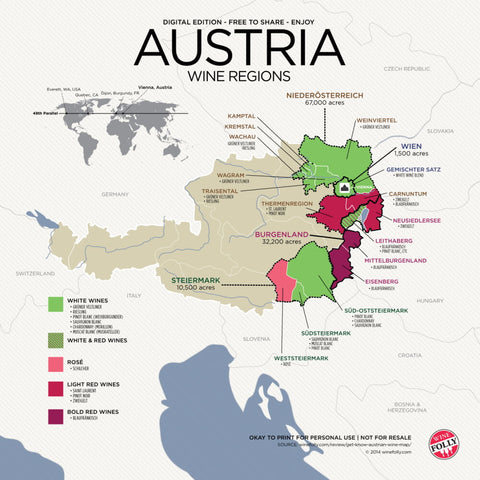
© Wine Folly
The influence of the famous Danube River on the white wines produced in the area cannot be underestimated. Europe’s second longest river, it originates in Germany’s Black Forest, then flowing from west to east through or bordering Austria, Slovakia, Hungary, Croatia, Romania, Bulgaria, Moldova and Ukraine, before meeting the Black Sea. Many of the Niederösterreich’s famous vineyards are located on the banks of the valleys that sit astride the Danube. Warm Pannonian air flows through the valleys during the day, while later in the summer, cool air comes down from the north during the nights to blanket the valleys. The resulting temperature changes between day and night, known as the diurnal shift, means that the grapes have a long ripening cycle. This gives complex wines that retain great freshness and acidity. Harvest typically starts here in September for dry, fresh styles, but can continue all the way into November for richer styles and for sweet wines.
The Wachau has its own well-known classification system, whereby Steinfeder wines are those up to 11.5%, Federspeil sitting between 11.5% and 12.5%, and Smaragd being a minimum of 12.5%. While the renowned Smaragd style often veers towards the richer, higher-alcohol levels, several growers are gaining an international reputation for lighter wines at the 12.5% end of the scale, brimming with energy, such as the Smaragds produced by the Alzinger estate. Other growers, such as Martin Muthenthaler and Peter Veyder-Malberg, have decided to shun the system altogether, creating terroir-focused wines that simply speak for themselves.
Many of the area’s top vineyards are so steep that it is simply impossible to drive a tractor in them. As such, they are often tended solely by hand — a loving, albeit back-breaking — labour of love.
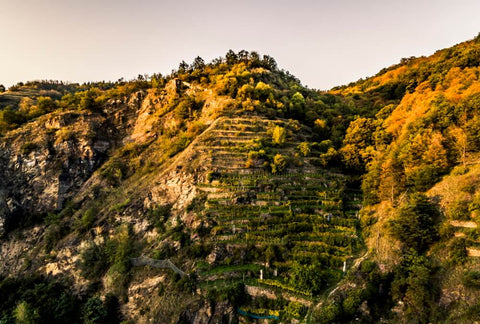
A vineyard in the Wachau - © Austrian Wine / Robert Herbst
Vienna, not only a capital city but also a wine region in its own right, is also famous for its white wines. It has a particular treasure trove of vineyards that produce wines known as ‘Gemischter Satz,’ which translates as field blend. This refers to the historic method of planting several grape varieties — sometimes a dozen or more — together in the same vineyard. In the past, when the climate was colder and much less reliable, by planting several varieties the growers created an insurance policy of sorts for themselves. If one variety was particularly damaged by frost one year, for example, this would ensure that their entire crop wasn’t wiped out.
Several of these older vineyards remain rooted here, and they are host to a diverse array of genetic vine material, including many rarer varieties that are no longer frequently seen, such as Jubiläumsrebe, Rosenmuskateller, Kahlenberger Weisse and Grüner Silvaner. These vineyards produce complex blends, with each variety contributing its own aromas, flavours and body. They are also important places of conservation — Austria’s vinous museums — where glimmers of the wines of the past are still found alive today.
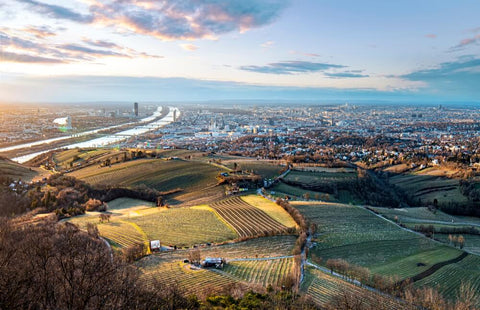
Vineyards in Vienna - © Austrian Wine / WSNA
Throughout Austria, there are also several other Germanic and indigenous white varieties to be discovered, such as Welschriesling, Roter Veltliner, Neuburger, Silvaner, Rotgipfler and Zierfandler, all of which play an important role. They may be less famous on an international level, but they create characterful and individual wines which express a unique sense of place.
Additionally, varieties that originally hail from further afield, such as Pinot Gris (Grauburgunder), Pinot Blanc (Weissburgunder), Muscat, Gewürztraminer and Chardonnay are also popular. Sauvignon Blanc, meanwhile, has found a particularly notable home in Styria, the southerly wine region which borders Slovenia. Here, it creates some of the world’s finest examples, particularly on the locally named opok soils. Although resembling schist from afar, these soils are in fact composed of a silty, limestone-rich marl. It is thanks to this limestone and the unique climatic conditions found in Styria that, just like in Sancerre — Sauvignon’s heartland — growers can produce spellbinding, mineral-focused white wines that are capable of ageing for decades.
The country’s microclimates and varieties allow winemakers to produce a vast array of white wine styles. Every sweetness level from bone-dry to Eiswein (the German term for ice wine, sweet wine that is produced from berries frozen on the vine in winter) is made here, with several examples being equally as soul-searching as the most heralded bottles of Germany’s Mosel. Many of the varieties grown are also used to produce delightful sparkling wines, whether made in the traditional method as Sekt, or as single fermentation naturally sparkling wines (‘pét-nat’ — short for pétillant naturel). In the Kamptal, Jurtschitsch produces some of Austria’s finest traditional method sparkling wines, and have also partnered up with the Arndorfer winery to produce the Fuchs Und Hase range of pét-nats, which are found on top restaurant wine lists around the world. Austria is also home to several of the world’s most celebrated skin-contact wines, also known as ‘orange wines,’ such as those produced by Gut Oggau and Maria and Sepp Muster.

Martin & Anna Arndorfer - © The Real Wine Fair
When it comes to red wine, both indigenous Austrian and international varieties have great success stories. Excellent examples of Pinot Noir are found across many parts of Austria. Syrah and Cabernet Franc also have a strong presence, particularly in the Burgenland, where Christian Tschida creates breath-taking red wines that sit decisively on the stage of world-class fine wine.
There is great joy to be found in Austria’s indigenous red wine varieties. Zweigelt, one of the newer grape varieties, having been bred in the first half of the 20th century, is Austria’s most planted red wine grape. Typically, it makes fruit-forward, easy drinking styles. It is also the grape behind much of Austria’s rosé production. Blauer Portugieser and Blauburger are also widely planted, often used in blends.
The much celebrated and rarer gem of Blauer Wildbacher is an ancient indigenous variety native to Styria. It is thought that it might hail directly from a crossing between Gouais Blanc (an obscure grape today, but the parent of many great varieties such as Pinot Noir), and a wild grapevine. The wines, typically made as rosé, are captivating with their wild aromas that evoke thoughts of forest hikes.
Lastly, it is impossible to discuss Austrian red wine without mentioning one grape in particular: Blaufränkisch, the undisputed head of the table. It is made in an array of styles, from rosé to age worthy reds. Whether traditionally destemmed and barrel aged, or whether made with whole bunches and the infusion style in amphora, there is a Blaufränkisch for every palate.
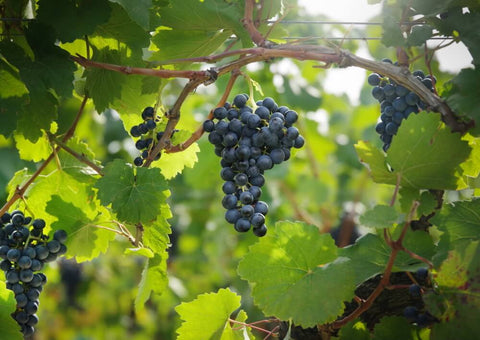
Blaufränkisch - © Austrian Wine / WSNA
With its ability to act as a mirror to the unique microclimates in which it is grown, Blaufränkisch is heralded worldwide as a true terroir translator. It requires a warmer climate than Riesling, hence it is mainly found in the Burgenland, the wine region straddling the Hungarian border. Here, it is grown on many soil types, from the green schist of the Sudburgenland to the limestone and slate of the Leithaberg. Markus Altenburger, who makes striking examples from the latter, explains his thoughts on the role the soils play in the taste of the wines:
“I feel that limestone gives length and a certain density of tannin for Blaufränkisch. There seem to be more tannins, but they are also finer. I really think you can distinguish the soil types from mouthfeel. When it comes to taste, slate seems to give more of the direct fruitiness and pepperiness (rotundone). For the whites, the slate gives a certain clarity and fresh fruitiness. When they’re on limestone, there’s always this certain tea-like taste; a herbal character and a saltiness which you also find in Blaufränkisch. The wines from limestone are somehow lighter and fresher.”

Markus Altenburger
Wine country in the Burgenland predates modern European countries as we know them. Once upon a time, the Burgenland belonged entirely to Hungary, then Austria-Hungary, then Hungary once more, until eventually the region was split into two. Sopron and eight other villages voted to remain part of Hungary, while the rest was annexed to form part of modern-day Austria in 1921. Memories of the borderless past are still found today, via winemakers such as Franz Weninger, who tends vineyards on either side of the border, creating both Austrian wines and Hungarian cuvées.
Finally, there is one more gem in Austria’s crown; an indigenous white variety that is making a slow but steady comeback. Together with Michael Wenzel, fellow Burgenland grower, Franz is also focusing efforts on reviving the Austrian presence of the ancient Furmint grape. Until recently in modern times, Furmint was almost solely known for its role in the sweet wines of Hungary, namely those hailing from Tokaj, but it was once also celebrated for its dry wines produced on the Austrian side of the border. Thanks to this duo, this is finally a reality once more. It has been a decades-long process to find the correct vine material in Hungary, to propagate it in Austria, and to learn not only how to tend it, but also how to make wine from it. Michael says,
“It was an adventure, like climbing a summit in the Austrian Alps. We had lost so much knowledge. From rootstocks, to trellising, to how to prune, we had to rediscover the best way to handle Furmint.”
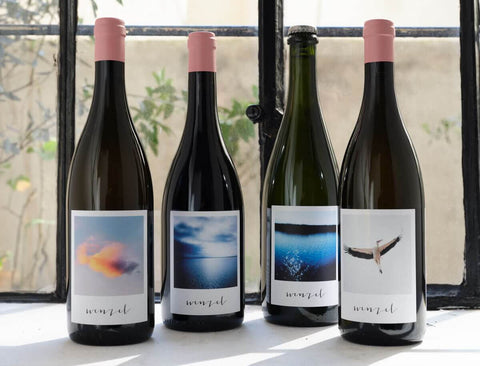
Michael Wenzel's wines
It is this blend of sensitivity, curiosity and respect that is found not just with regards to Michael’s approach to Furmint, but also in the vineyards, cellars and thoughts of so many of Austria’s winemakers. It is an approach that begins in the vineyard, with its roots in a respectful relationship with Mother Nature. Therefore, it is no surprise that Austria is one of the world’s pioneering countries when it comes to organic and biodynamic viticulture, with 15.3% of growers being certified, with many more working organically without certification, and with most of its top winemakers working in this manner.
Drinking a great Austrian bottle enables us to explore the intricate relationship between humankind and nature via a delicious sip, and ultimately, isn’t that what wine is all about?
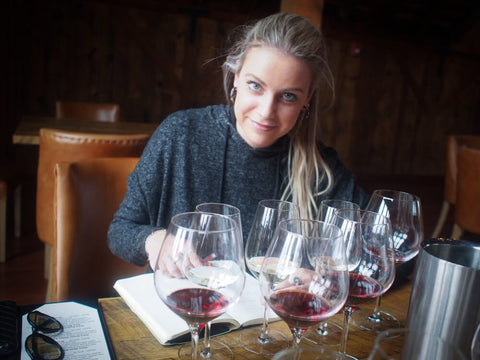
About Christina Rasmussen
A Dane born and raised in the UK, Christina is a wine writer, photographer & keen conservationist. She studied French literature and language which led her to move to Burgundy where her love for wine started. After graduating, she embarked upon a career in wine consultancy, while taking her WSET wine exams and started writing as a freelancer. Her work focuses on organic, biodynamic and regenerative agriculture with the aim to educate and inform while making it a little more fun and accessible.
 Sign-In
Sign-In
0 comments